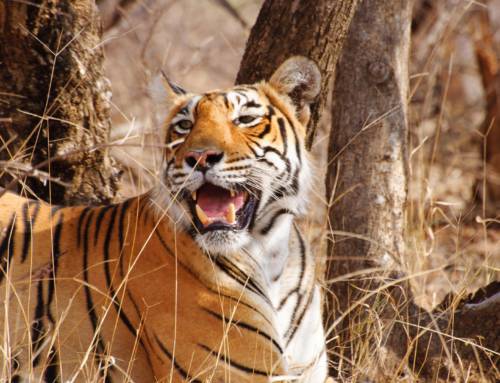Blog Author: Ishika Ramakrishna
Key Highlights:
- For three decades, the Centre for Wildlife Studies installed camera traps across the Western Ghats to study the tigers found across that landscape.
- These cameras, which were set up diligently and in plenty, incidentally, also captured many fascinating species apart from the majestic tiger.
- Small carnivores like mongooses, otters and civets are challenging animals to spot and study in the wild.
- The scientists behind this study made use of the several photo captures of smaller species from one year of CWS’ camera trap images to learn more about which species are found in these regions.
- They ended up finding over four thousand images of eleven species of small carnivores, including some rare animals that had never been recorded before!
The Western Ghats is a biodiversity hotspot in India, housing several species of mammals, birds, amphibians, reptiles, plants and insects. Of these, large mammals and birds are the easiest to sight and study. But what about the plethora of other species that live in these forests? With tropical evergreen to dry deciduous and montane grasslands, the Western Ghats also provide habitat and refuge for several small carnivores that play an important role in these ecosystems. This group of animals includes mongooses, martens, civets and otters. They are sneaky, skittish and cryptic in their behaviour. They can be challenging to study—from locating to observing them.
Some scientists at the Centre for Wildlife Studies (CWS) were keen to know more about where these species are found, their biology, their behaviour, how they use different habitats. To do this, they strategically made use of a large dataset from a completely different study! For nearly three decades, under the leadership of Dr. Ullas Karanth, CWS had placed camera traps across the Western Ghats specifically to study tigers. However, these cameras captured much more than their target species—from cheeky monkeys to elusive and rare creatures like the brown palm civet, numerous animals sauntered past these cameras tucked away in tiger habitats. Dr. Devcharan Jathanna and his peers combed through images from 566 camera traps from 2013 to 2014 for captures of small carnivores. Excitingly, they obtained a whopping 4452 images of 11 species in this landscape from just a single year of camera trap images!
These camera trap images were obtained from eight different protected areas, and so this study provided a comprehensive overview of where some of India’s most secretive small carnivores are found. These cameras were initially installed to capture large cats like tigers and leopards hence, were placed along forest roads and trails. But the scientists were fascinated to find the presence of many small carnivores—including civets who are mainly known to use trees—along these routes. However, this also meant that they were unable to find images of the small-clawed otter and smooth-coated otter from these images, which are present along rivers and reservoirs in this landscape.
This study provided the very first record of the brown palm civet from these areas, despite several researchers’ efforts to locate them previously. They also captured the stripe-necked mongoose and brown mongoose in dry and wet habitats, respectively. Some other exciting finds include the leopard cat, which was captured for the first time from dry habitats, and a single image of the Nilgiri marten, a species which is particularly hard to sight!
This opportunistic, cost-effective and smart approach helped document some small carnivore species that would otherwise be nearly impossible to study individually. Such collaborative effort proved to be incredibly fruitful, and quite simply, built upon what we know about these species across the Western Ghats today.
Keywords: small carnivores, camera traps, landscape-scale surveys, species records, Western Ghats
You can access the original article here.





